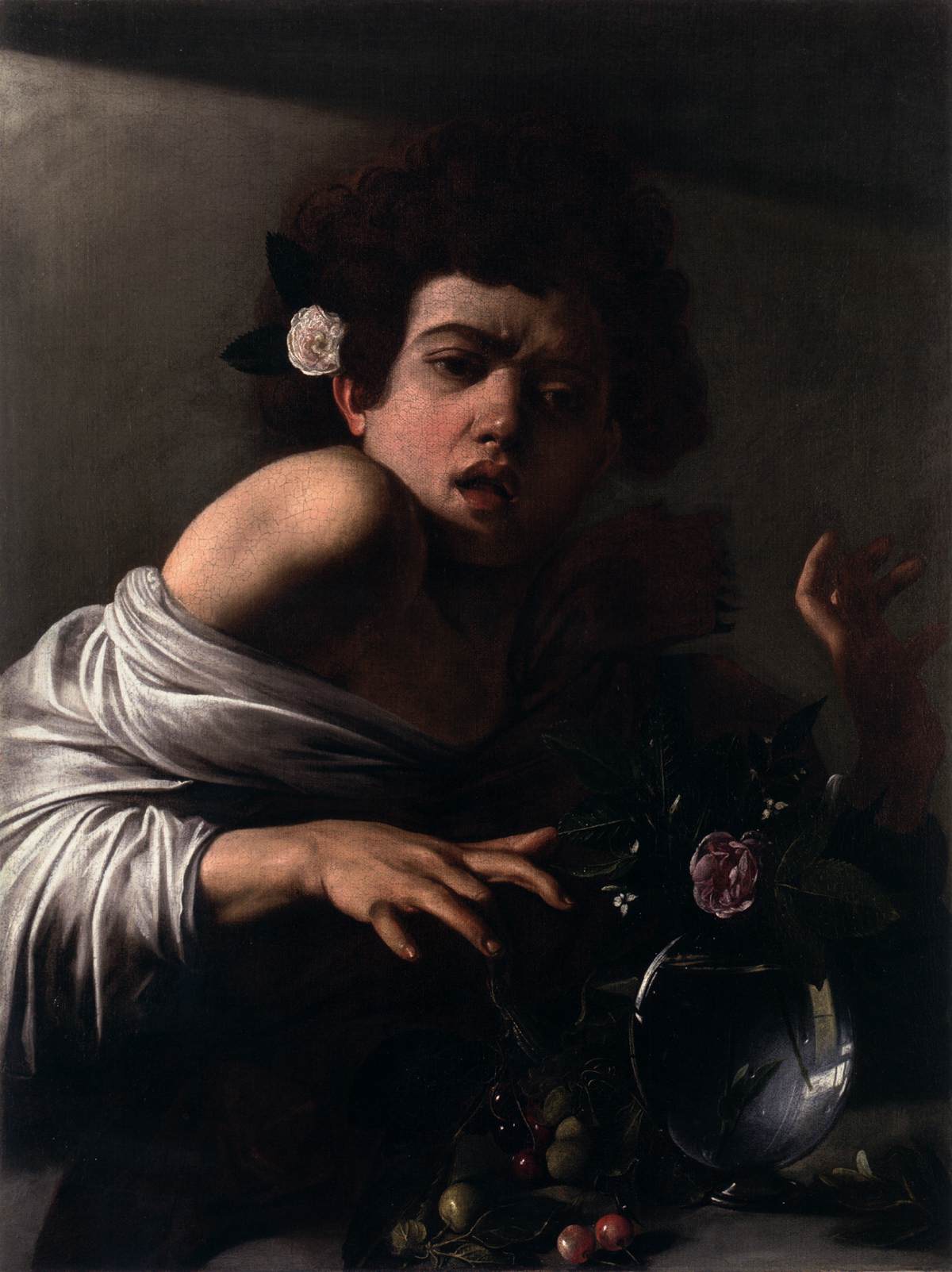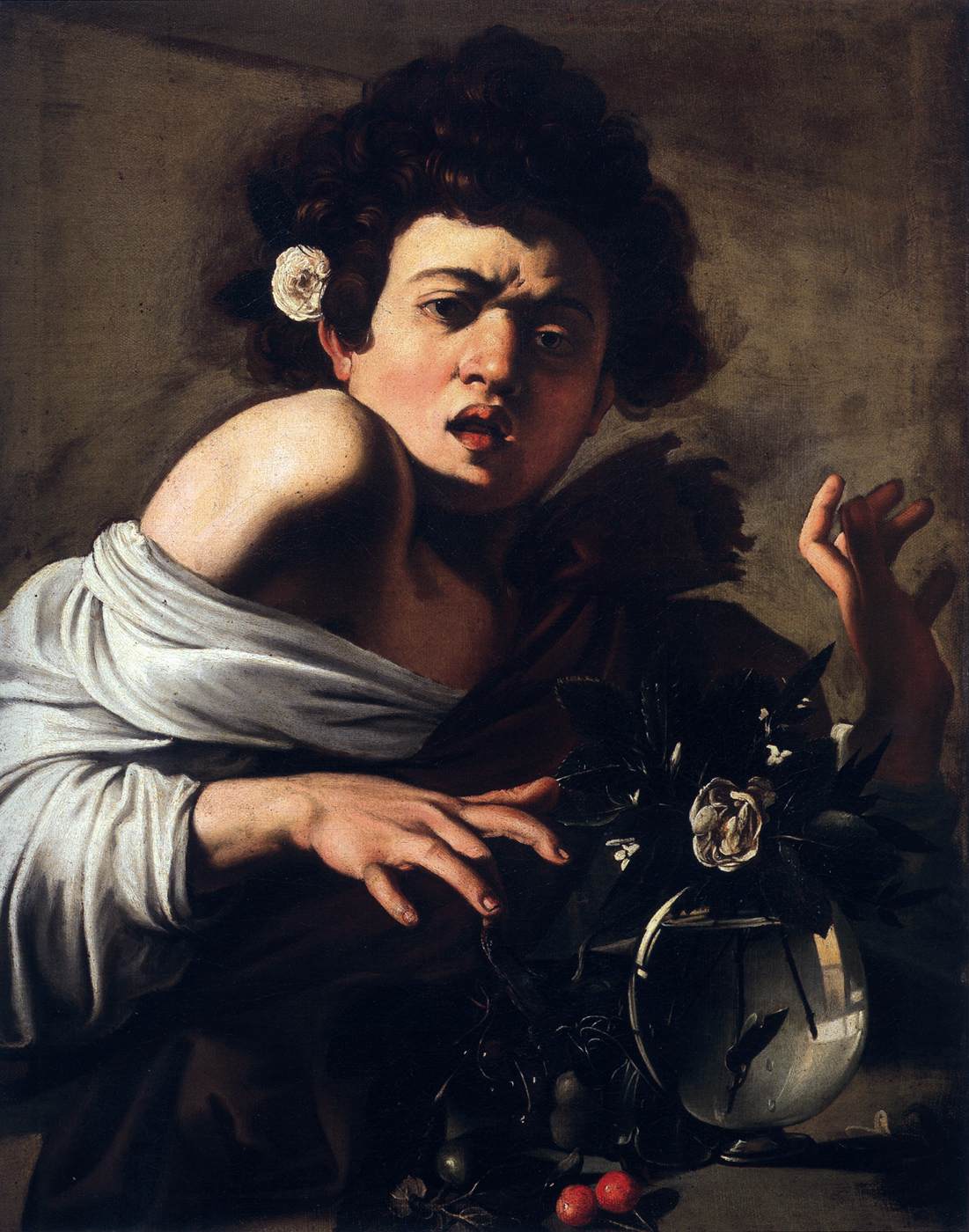 About this time of year, several years ago, I was assigned my absolute favorite project in graduate school. I was required to read every single published work about one work of art, in order to trace the artwork’s historiography. I ultimately decided to research Caravaggio’s Boy Bitten by a Lizard (c. 1594).
About this time of year, several years ago, I was assigned my absolute favorite project in graduate school. I was required to read every single published work about one work of art, in order to trace the artwork’s historiography. I ultimately decided to research Caravaggio’s Boy Bitten by a Lizard (c. 1594).
Soon after I began to research my topic, I discovered that there are actually two versions of this painting – and both are attributed to Caravaggio. One version (shown left) hangs in the National Gallery in London, and the other (shown below, right) is in the Fondazione Roberto Longhi in Florence. Several connoisseurs argued over the authenticity of the paintings during the 20th century, but that debate essentially ended in 1992 (when Denis Mahon asserted that both examples are original, although he thinks that the Florence version was painted several years earlier than the London version).1
The most interesting thing I learned from my research project, however, was that one single article can forever change the shape of discourse (for better or for worse). In 1971, Donald Posner wrote a seminal article on the homo-erotic nature of Caravaggio’s early paintings.2 Posner argued that Boy Bitten by a Lizard is one of the most pronounced homosexual characters painted by Caravaggio. He finds the boy in this painting to appear sensuous, androgynous, and seductive (as suggested by the off-the-shoulder robe). Since that 1971 article, just about everyone has latched onto this homo-erotic theory and it still remains (mostly) undisputed.

What is interesting to me, though, is that no one (not even Caravaggio’s contemporary biographers) ever mentioned anything about homosexuality or effeminate characteristics until 1971. If this was such a key part of Caravaggio’s work, why was it unmentioned (perhaps unnoticed?) for centuries? I think that “Posnerian” scholars have imposed a 20th century perspective on this painting, and we need to rethink some of the homo-erotic interpretations of Caravaggio’s work. Creighton Gilbert also has come to this conclusion, arguing that the fair appearance of youthful men, was long celebrated in society.3 Gilbert argues that it was only during the nineteenth century, with the rise of capitalism, that men no longer wanted to be considered beautiful. The life of the artistocrat was not considered a social ideal anymore, for it was replaced by work ethic. With this change, men (particularly those of the middle class) began to insist on their difference from women, which not only changed clothing, but also changed other social norms (such as men kissing or crying).
From a historical (and historiographic!) perspective, I think that Gilbert’s argument makes a lot of sense. I also like much of Gilbert’s argument that this painting has roots in classicism. Gilbert finds that Boy Bitten by a Lizard was inspired by a Latin poem which was popular during the time of Caravaggio: O treacherous boy, spare the lizard creeping toward you; it wants to die in your fingers. The elements in this painting point towards this poem, including the bare shoulder, which recalls classical antiquity (instead of homosexuality, as interpreted by Posner).
What do people think? What was your immediate reaction upon seeing this painting for the first time? (Did you think that the subject was “effeminate” or merely “classical”?) Are we so entrenched in homo-erotic theory that it is difficult to examine this painting in any other way?
P.S. This post was indirectly inspired by the ongoing contest at Three Pipe Problem. People can submit a limerick about Caravaggio in order to win a copy of Andrew Graham-Dixon’s new book, Caravaggio: A Life Sacred and Profane. Last night I was thinking up words that rhymed with “lizard,” and decided I also better write a Boy Bitten by a Lizard post.
1 See Keith Christiansen and Denis Mahon, “Caravaggio’s Second Versions,” The Burlington Magazine 134, no. 1073 (August 1992): 502-04.
2 Donald Posner, “Caravaggio’s Homo-Erotic Early Works,” Art Quarterly 34 (1971): 301-324.
3 Creighton E. Gilbert, Caravaggio and His Two Cardinals (University Park, Pennsylvania: The Pennsylvania State University Press, 1995).






